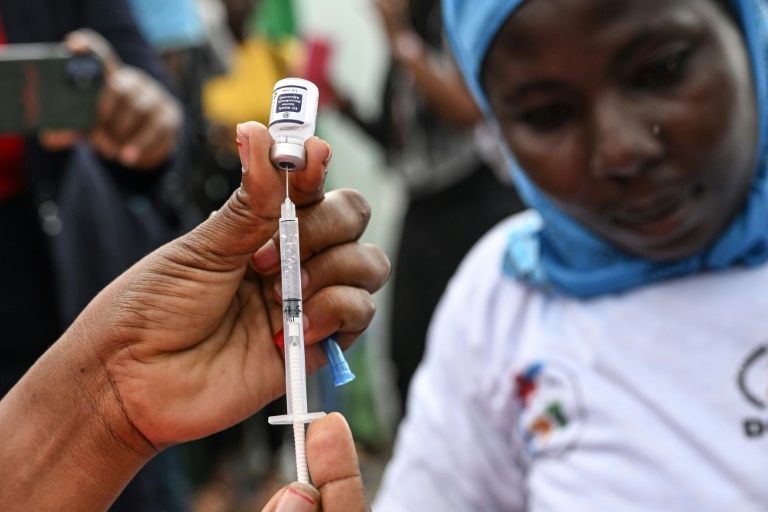Science
Flossing Paves New Path for Vaccine Delivery, Research Shows

Research from North Carolina State University suggests that dental floss could become a novel method for administering vaccines. This innovative approach targets the junctional epithelium, a specialized gum tissue that allows for robust immune responses at critical entry points for infections such as influenza and COVID-19.
In a study published in the journal Nature Biomedical Engineering, scientists demonstrated that using unwaxed dental floss to apply a flu vaccine in laboratory mice resulted in a significantly stronger immune response compared to traditional oral methods. The results were comparable to those achieved with nasal vaccines, but without the associated risks. This method proved effective with various types of vaccines, including mRNA and protein-based formulations.
Harvinder Singh Gill, the lead researcher on the study, emphasized the importance of mucosal surfaces in combating infections. “Mucosal surfaces are important because they are a source of entry for pathogens, such as influenza and COVID,” he noted. “When a vaccine is given via the mucosal surface, antibodies are stimulated not only in the bloodstream but also on mucosal surfaces, enhancing the body’s ability to prevent infections.”
The junctional epithelium, which lines the deepest part of the gum and tooth pocket, is uniquely different from other epithelial tissues. While most epithelial barriers are designed to prevent pathogen entry, the junctional epithelium lacks these protective features. This allows immune cells to be released, creating a frontline defense against bacteria, which is crucial for oral health.
To explore the viability of this delivery method, researchers conducted experiments where they flossed mice with vaccine-coated dental floss. They compared the immune responses of mice receiving the peptide flu vaccine via the junctional epithelium to those receiving it through nasal application or under-the-tongue administration. The findings revealed that the junctional epithelium method produced superior antibody responses on mucosal surfaces.
The study further tested the delivery technique with three prominent vaccine classes: proteins, inactivated viruses, and mRNA. In each case, the results indicated robust antibody responses both in the bloodstream and across mucosal surfaces.
Interestingly, the timing of food and water intake following the flossing did not affect the immune response, suggesting a practical advantage for real-world applications.
Despite these promising findings, researchers acknowledge that many questions remain before this method can be considered for clinical use. Nonetheless, the potential for improved vaccine administration through flossing could represent a significant advancement in public health strategy.
As the world continues to navigate challenges posed by infectious diseases, innovations like this could play a crucial role in enhancing immunity at the points where pathogens most often enter the body.
-

 Lifestyle2 weeks ago
Lifestyle2 weeks agoChampions Crowned in Local Golf and Baseball Tournaments
-

 Science2 weeks ago
Science2 weeks agoMicrosoft Confirms U.S. Law Overrules Canadian Data Sovereignty
-

 Education2 weeks ago
Education2 weeks agoRed River College Launches New Programs to Address Industry Needs
-

 Technology2 weeks ago
Technology2 weeks agoDragon Ball: Sparking! Zero Launching on Switch and Switch 2 This November
-

 Technology2 weeks ago
Technology2 weeks agoWorld of Warcraft Players Buzz Over 19-Quest Bee Challenge
-

 Technology2 weeks ago
Technology2 weeks agoGoogle Pixel 10 Pro Fold Specs Unveiled Ahead of Launch
-

 Science2 weeks ago
Science2 weeks agoChina’s Wukong Spacesuit Sets New Standard for AI in Space
-

 Science3 weeks ago
Science3 weeks agoTech Innovator Amandipp Singh Transforms Hiring for Disabled
-

 Science2 weeks ago
Science2 weeks agoXi Labs Innovates with New AI Operating System Set for 2025 Launch
-

 Technology3 weeks ago
Technology3 weeks agoNew IDR01 Smart Ring Offers Advanced Sports Tracking for $169
-

 Technology2 weeks ago
Technology2 weeks agoGlobal Launch of Ragnarok M: Classic Set for September 3, 2025
-

 Technology2 weeks ago
Technology2 weeks agoHumanoid Robots Compete in Hilarious Debut Games in Beijing
-

 Technology2 weeks ago
Technology2 weeks agoFuture Entertainment Launches DDoD with Gameplay Trailer Showcase
-

 Health2 weeks ago
Health2 weeks agoB.C. Review Urges Changes in Rare-Disease Drug Funding System
-

 Health2 weeks ago
Health2 weeks agoRideau LRT Station Closed Following Fatal Cardiac Incident
-

 Technology2 weeks ago
Technology2 weeks agoInnovative 140W GaN Travel Adapter Combines Power and Convenience
-

 Science3 weeks ago
Science3 weeks agoNew Precision Approach to Treating Depression Tailors Care to Patients
-

 Business2 weeks ago
Business2 weeks agoNew Estimates Reveal ChatGPT-5 Energy Use Could Soar
-

 Health2 weeks ago
Health2 weeks agoGiant Boba and Unique Treats Take Center Stage at Ottawa’s Newest Bubble Tea Shop
-

 Science2 weeks ago
Science2 weeks agoNew Study Reveals Surprising Impact of Gratitude on Helping Behaviors
-

 Technology3 weeks ago
Technology3 weeks agoDiscover the Relaxing Charm of Tiny Bookshop: A Cozy Gaming Escape
-

 Technology2 weeks ago
Technology2 weeks agoBorderlands 4 Promises Massive Changes with 30 Billion Guns
-

 Technology2 weeks ago
Technology2 weeks agoQuoted Tech Launches Back-to-School Discounts on PCs
-

 Lifestyle2 weeks ago
Lifestyle2 weeks agoVancouver’s Mini Mini Market Showcases Young Creatives










